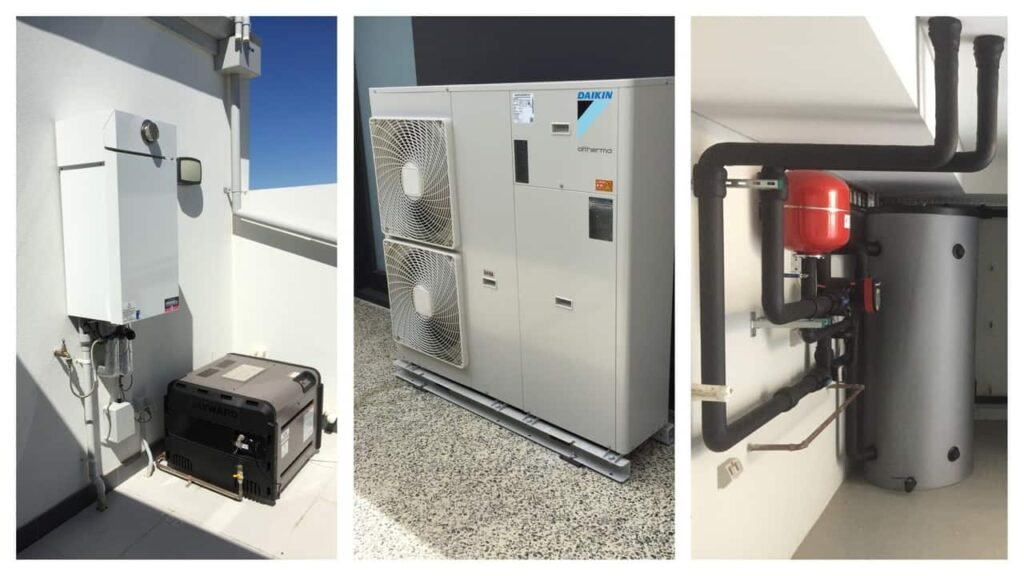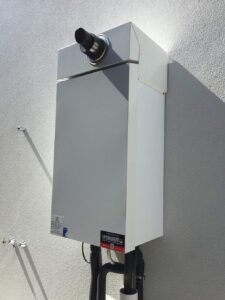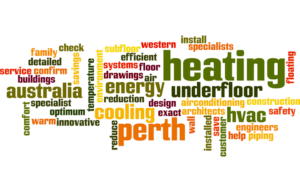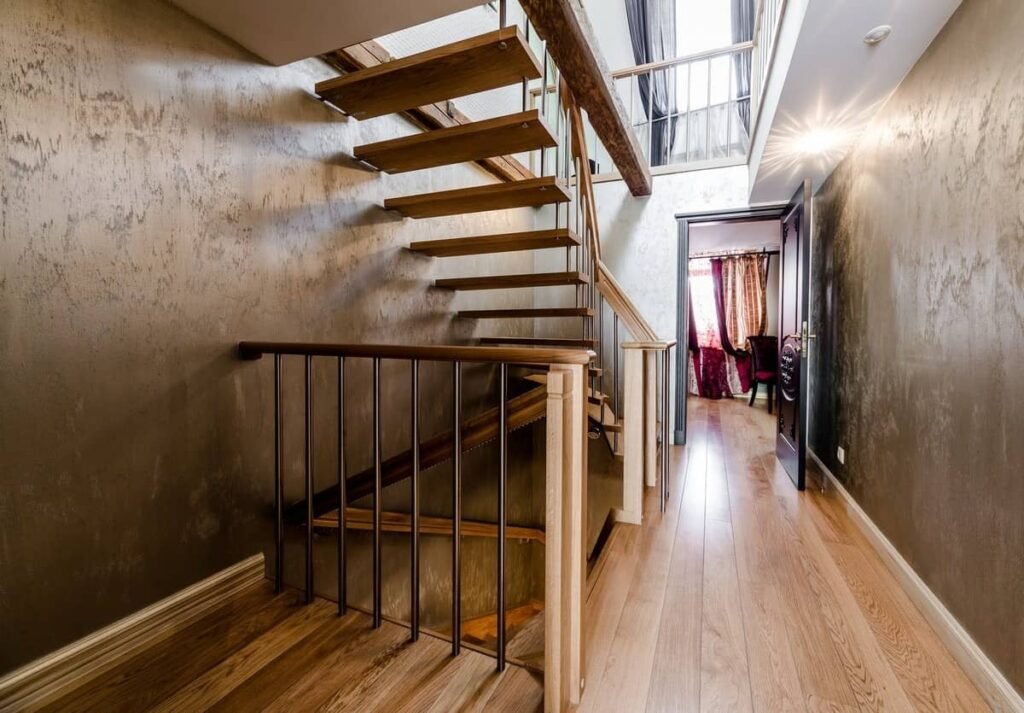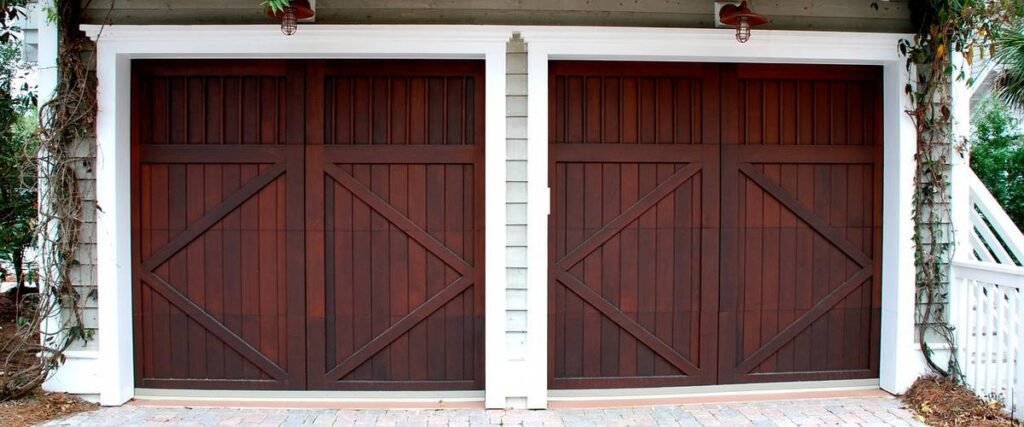In Australia and around the world, the most common ways of heating up your floor heating system water are with gas boilers and heat pumps.
The boiler or the heat pump heats the water that circulates through the pipes in the floor. The warm floor then slowly radiates the energy, heating up your rooms in a natural manner.
They’re both great options, but one will most certainly be suitable than the other for you: Depending on your budget, your expected running costs, your application, and perhaps other technology you may have in your new home.
The truth about gas boilers
These are simple devices – they burn gas and transfer most of the heat to the system water.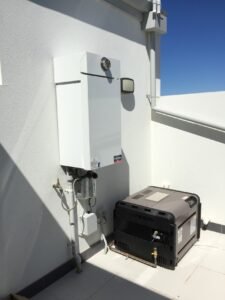
Essentially, they’re like hot water units you see hung on the wall at many houses, but more sophisticated: a hydronic boiler includes a circulator pump, and expansion vessel, all sorts of safety valves, temperature and pressure sensors – and all of these ensure your system runs smoothly.
When looking at gas boilers, you will see a ‘standard’ and ‘condensing’ option.
Standard boilers are like old hot water heaters – they burn the gas, and 80-85% of the heat is transferred to the system water. The other 15-20% of the heat is blown away with the flue exhaust gases.
Condensing boilers are like the standard boilers, but on top of transferring the 80-85% of the into hot water, they also have a way of extracting the 15-20% of the heat lost by a standard boiler.
How?
They have an additional heat exchanger, which use the exhaust gases to preheat the incoming system return water, taking advantage of the condensing principle: Water vapour (within the exhaust gas) condenses on cold surfaces (return system water) and this releases latent energy through phase-transition.
What is not commonly know is that the lower the return water temperature of your boiler, the higher the rate of condensing, and the higher the efficiency (the conversion of the input energy to the output heat). If the return water temperature is over 57°C, the condensing effect is at a minimum, and it may not be worth
investing in a condensing boiler (the only way to make sure it’s worthwhile is by having a good low-temperature system designed and installed by a professional. Almost anybody can install a high temperature system, but the real skill and benefit is from having a low-temperature system).
What are the pros and cons of a gas boiler?
Gas boilers don’t take up much space. They can be installed either internally (flued) or externally (generally wall hung). Gas boilers are very quiet (when well maintained).
The initial cost of a gas boiler is usually significantly lower than that of a heat pump, however, the running cost of gas boilers (and therefore your floor heating system) is generally higher (we’ll come back to this a little further down in the article).
Where should I use a gas boiler?
All heat sources are most efficient when they can heat your room with the lowest temperature water possible. And this depends on your system design and the external weather conditions.
Because gas boilers can produce water anywhere from 25-85°C, they are suitable for all hydronic applications (floor heating, radiators, etc.).
A well designed and installed floor heating system generally requires 35-45°C water, and therefore works very well with a condensing boiler. But if your floor system is designed poorly, you need high temperature water (50-60°C), which decreases the boiler efficiency and increases the running costs.
Remember: The lower the temperature of the water that can run through the pipes in your floor, the better.
The lowdown on heat pumps
The most common analogy used is that a heat pump works like a fridge, but in reverse. And there is nothing wrong with this analogy – but it doesn’t really tell you much, apart from the fact that a heat pump can produce heat.
Heat pumps are actually more like air-conditioners than fridges… in fact, they are exactly the same, apart from the fact that they transfer the heat that they generate to the water in your hydronic system, and not directly to the air in your room.
But where does the heat come from?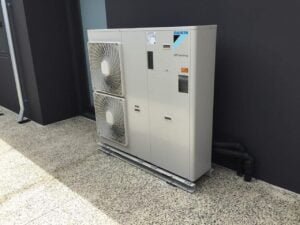
The heat is collected from the air, the ground, or a body of water (such as a lake).The heat pump doesn’t create the heat, it just collects it, and concentrates it.
So let’s imagine we have an air-to-water heat pump (meaning it collects the heat from air, and concentrates it into water).
Over an hour of operating, this heat pump sucks up a huge volume of air (let’s say 3,000,000 litres of 7°C outside air), extracts the available heat, and blows the air out again at perhaps 2°C. So we can see from this that the heat pump has extracted 5°C of heat from this.
Next the heat from the air is concentrated within the heat pump, and after it’s concentrated, it passes this heat to the system water. This system water may be coming in at 30°C, but it leaves the heat pump at 35°C, and the heat pump can heat around 1000 litres of water this way.
So we can see the heat pump has passed the 5°C it took from a large volume of air to a small volume of water.
The heat pump does this by using a little bit of electricity and taking advantage of the refrigeration cycle (this is not some crazy magic, but established technology which obeys the laws of physics). Because of this, a heat pump can take in 1.0kW of electricity, and turn it into 4.0 or 5.0kW of heat (sometimes even 6.0 or 7.0kW).
Heat pumps are therefore super-efficient, but ONLY if ALL of the below are selected, set and controlled right:
- you select the correct heat pump unit (some heat pumps can be more than 50% efficient than others, even though they are the same type).
- you select the right energy source (the warmer the air/ground/water, the more heat it can produce from the same amount of electrical input). For most small/medium projects an air-source heat pump is the best option, but where there is a high demand for heat, we’re lucky in Perth that we have warm underground aquifers that we can draw plenty of heat from.
- your engineer designs a low-temperature heating system (a heat pump is many times more efficient at producing 35°C water than 55°C water, meaning that the running costs of a low temperature system are much lower than a high temperature system).
- your installer ensures the correct flow rates are met with the right size pipes and pumps, that the pipes are well insulated where they need to be, and the floor heating system is not leaking energy through the structure (lazy and uneducated installation mistakes can make a system burn through 4x more energy than a professionally installed system).
Getting all four right can create a 4-5 times difference in the results:
A great heat pump installation can produce 5.0-7.0kW of heat from every 1.0kW. But a poor heat pump installation may only produce 1.5kW of heat from every 1.0kW of electrical input… which would most likely never pay for the additional capital investment required with a heat pump.
This means that even though you have the same heat pump as your neighbour, you can be heating your home for 5 times less or 5 times more that they are. (And this depends on the selection of the right technology, designing the system correctly, and setting up the system so that it works as it´s supposed to.)
Little known fact: Heat pumps don’t only produce heat – they can also reverse the cycle and produce chill (cold water) which can be used for surface cooling or air-conditioning. So by installing a heat pump with floor heating for warming your home in winter, you can also use the same system – without requiring anything extra – to cool your home (with floor cooling or hydronic air-conditioning) in summer.
So, how do I select a heat pump for my home?
Ask these three questions when choosing a heat pump for your home:
1. Am I comparing the heat pumps on my terms, not the manufactures‘?
Because heat pumps are more efficient when they’re extracting heat from a warm environment (e.g. warm air) and producing only luke-warm heating system water (e.g. 35°C), make sure you compare the same performance data between them (some manufacturers display performance data with warmer outside air for example). For air/water heat pumps the standard conditions are:
- Outside Air temperature 7°C
- Heating system water flow temperature 35°C
- Water temperature difference (flow/return) 5°C
So, when comparing heat pumps, make sure you are comparing their results at the same outside air temperature, flow temperature and water temp. difference. Only then will the comparison actually compare apples to apples.
2. Will the heat pump keep me up during the night and annoy my neighbours?
Noise can be a big issue with heat pumps, as there are compressors working and fans moving large volumes of air close to buildings. Noise is measured in decibels (dB), and a distance should be stated. For example 60dB(a) at 3m (this would be a satisfactory heat pump noise level, however, the lower the better).
3. Where is the heat pump manufactured?
Historically heat pumps made in Europe have proven to be the best in terms of efficiency, quality, longevity and quiet operation (Daikin Europe, Stiebel Eltron, etc.).
It’s easy to find a heat pump at a local retailer or online, but having a heat pump does not guarantee your system will have low running costs and create comfort inside your home. You need the right heat pump that completements an expertly designed and professionally installed floor heating system… after all, your entire system is only as effective as the weakest component.
So how do I decide whether a gas boiler or a heat pump is better for me?
– Gas boiler has lower supply and installation cost, but higher running cost.
– Heat pump has higher supply and installation cost, but lower running cost if designed and installed correctly.
– Heat pump can potentially provide cooling.
– Heat pump electrical input can be supplemented by Solar PV system.
Condensing Boiler running cost:
– 100% efficiency (100% of the input energy is exported as output energy)
– This means 1.0kW of gas in equals 1.0kW of heat out.
– If you pay $0.10 per kW of gas, then you are paying $0.10 per kW of heat into your system.
Heat pump running cost:
– Let’s assume 500% efficiency from an air/water heat pump that’s part of a system that’s well designed and installed.
– This means that 1.0kW of electrical input equals 5.0kW of heat output.
– If you pay $0.30 per kW of electricity, then you are paying $0.06 per kW of heat into your system.
A heat pump can therefore cost ~40% less per hour to run than a gas boiler (awesome!)…
but a heat pump costs 2-3 times more to supply and install than a gas boiler.
So if you plan to only stay in your new home for a short amount of time, a gas boiler is a good option for you (as it gives you the comfort in the home you want).
However, if you’re environmentally conscious, you’re planning to stay in your new home for a long time, and – potentially – you’re looking to install solar PV panels and perhaps combine the floor heating system with cooling, a heat pump is the best option for you.


